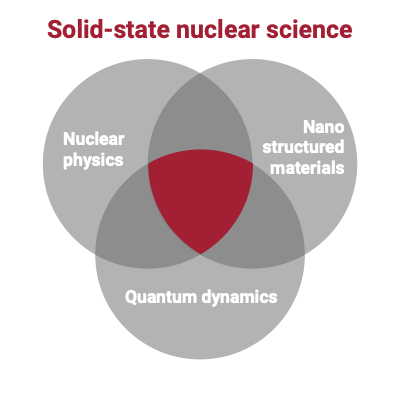Where did this field come from?
A full historical account deserves a whole blog post to itself, but in short we can say the following:
Nucleonics lies at the intersection of quantum dynamics, nanostructured materials and nuclear physics and is concerned with the interplay of the molecular, atomic, and sub-atomic scales.
Solid-state environments have long been considered rich in their dynamics. For the longest time, the atomic nucleus was considered as merely a passive observer - like a cork bobbing up and down in a pool of water. However, as early as the 1930’s scientists showed that, at least in principle, the weakly connected atomic and sub-atomic scales could in fact influence each other (Breit 1937). Interest in such effects was accelerated by reports, in the late 1980s and 1990s, of experimental anomalies in metal-hydride systems (often dubbed cold fusion and LENR). While not all of those reports live up to our scientific standards, we believe that collectively they represent a body of formal and informal knowledge not to be ignored. Indeed this knowledge has since gone on to stimulate rigorous development in theory, materials and concepts which together define a scientific field (see about page for more details).
Enjoy exploring our site, where you can learn more about us and our motivations, the story behind the name Ida, some great literature to get you started, our current research and thoughts about various topics in our blog.

